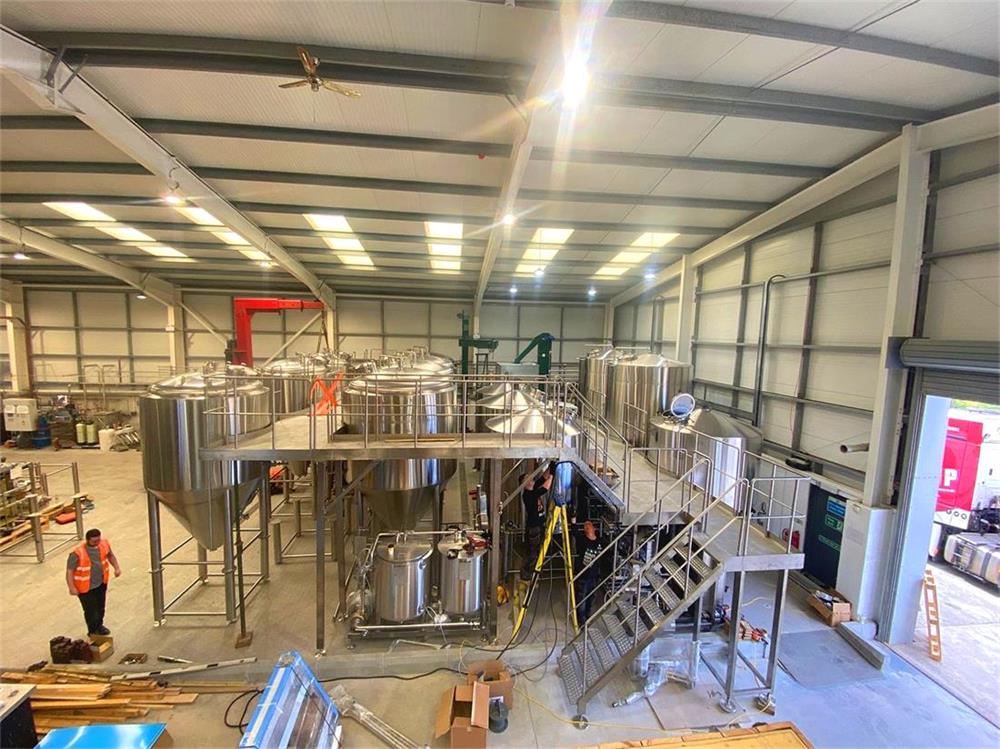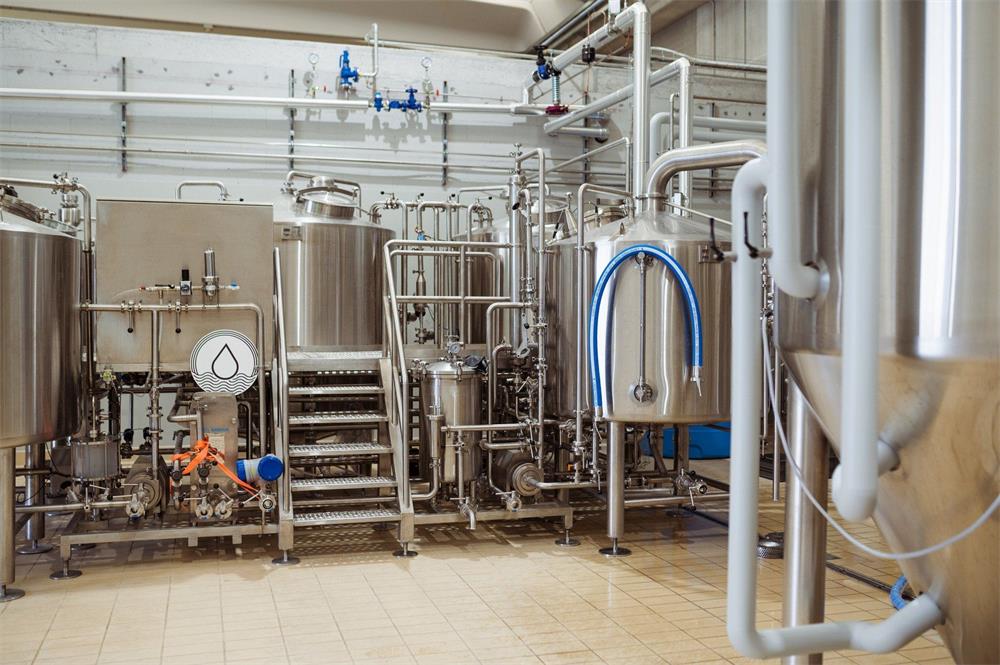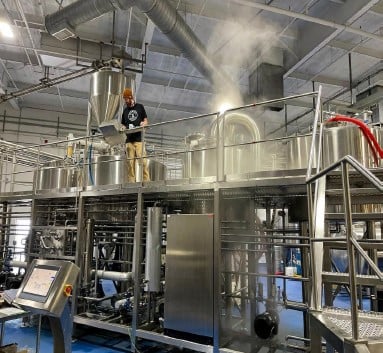Building a Brewery: Your Ultimate Guide
So, you’re thinking about building a brewery, huh? It’s an exciting venture filled with creativity, science, and, of course, lots of beer. But where do you start? This comprehensive guide will walk you through everything you need to know about building your brewery from scratch. We’ll cover equipment, brewing processes, costs, suppliers, and even some tips on customization. Ready to dive in? Let’s get brewing!
Overview of Building a Brewery
Starting a brewery isn’t just about having a passion for beer; it’s about planning, research, and execution. Whether you’re envisioning a small craft brewery or a large-scale operation, understanding the key elements involved is crucial. From securing funding and selecting the right equipment to designing the layout and navigating the regulatory landscape, every step requires careful consideration.
Key Elements to Consider:
- Business Plan: Outline your goals, target market, and financial projections.
- Location: Choose a space that meets your production needs and local regulations.
- Equipment: Invest in the right brewing systems and tools.
- Ingredients: Source quality hops, malt, yeast, and water.
- Staff: Hire experienced brewers and support staff.
- Marketing: Develop a brand and marketing strategy to attract customers.

Present Equipment Guide
When it comes to brewing equipment, the choices can be overwhelming. Let’s break down what you need to get started and how each piece of equipment contributes to the brewing process.
Essential Brewing Equipment
- Brewhouse System: The heart of your operation, consisting of the mash tun, lauter tun, brew kettle, and whirlpool.
- Fermentation Tanks: Where the magic of fermentation happens.
- Conditioning Tanks: For aging and clarifying your beer.
- Packaging Equipment: Bottles, cans, kegs, and the machinery to fill them.
- Cooling Systems: To control fermentation temperatures.
- Cleaning Systems: Ensuring everything is sanitized and ready for use.
Types of Equipment and Their Functions
| Equipment Type | Function |
|---|---|
| Mash Tun | Mixes grain and water to convert starches to sugars. |
| Lauter Tun | Separates the wort from the grain husks. |
| Brew Kettle | Boils the wort and adds hops for bitterness, flavor, and aroma. |
| Whirlpool | Separates hop particles and trub from the wort. |
| Fermentation Tanks | Vessels where yeast converts sugars into alcohol and CO2. |
| Conditioning Tanks | Tanks where beer matures and clarifies. |
| Packaging Machines | Equipment for bottling, canning, or kegging the finished beer. |
| Cooling Systems | Equipment to maintain optimal fermentation temperatures. |
| Cleaning Systems | Systems to ensure all equipment is sanitized and free of contaminants. |
The Brewing Process Explained
Brewing beer is both an art and a science. Here’s a detailed look at the steps involved in creating your perfect brew.
Step-by-Step Brewing Process
- Milling: Crush the malted grains to expose the starches.
- Mashing: Mix the milled grains with hot water in the mash tun to convert starches to fermentable sugars.
- Lautering: Separate the liquid wort from the spent grains.
- Boiling: Boil the wort in the brew kettle, adding hops at various stages for bitterness, flavor, and aroma.
- Cooling: Rapidly cool the boiled wort to fermentation temperature.
- Fermentation: Transfer the cooled wort to fermentation tanks, add yeast, and let it ferment.
- Conditioning: Age the beer in conditioning tanks to develop flavors and clarity.
- Packaging: Bottle, can, or keg the finished beer for distribution and sale.
Capacity, Space, Design, and Layout
Designing your brewery involves careful planning of your space and equipment layout to ensure efficient operations.
Key Considerations for Brewery Design
| Aspect | Details |
|---|---|
| Capacity | Determine your production needs (e.g., barrels per year). |
| Space | Assess the square footage required for equipment, storage, and customer areas (if applicable). |
| Design | Plan the layout for optimal workflow, including zones for brewing, fermenting, packaging, and storage. |
| Customization | Consider custom equipment or designs that fit your specific brewing process and brand identity. |
Suppliers and Price Ranges
Choosing the right suppliers for your equipment and ingredients is crucial to your brewery’s success.
Brewing Equipment Suppliers and Costs
| Supplier | Equipment Provided | Price Range |
|---|---|---|
| Blichmann Engineering | Homebrew to commercial equipment | $2,000 – $200,000 |
| Ss Brewtech | Fermenters, kettles, accessories | $500 – $100,000 |
| MoreBeer | Complete brewing systems | $1,000 – $150,000 |
| Brewmation | Automated brewing systems | $10,000 – $300,000 |
| JV Northwest | Custom brewhouses and tanks | $50,000 – $500,000+ |
Installation, Operation, and Maintenance
Once you have your equipment, the next steps are installation, operation, and ongoing maintenance to keep everything running smoothly.
Guide to Brewery Installation, Operation, and Maintenance
| Stage | Details |
|---|---|
| Installation | Professional installation ensures proper setup and functionality of all equipment. |
| Operation | Training your staff on equipment use and brewing processes. |
| Maintenance | Regular cleaning and servicing of equipment to prevent downtime and maintain quality. |
Choosing the Right Supplier
Selecting a supplier involves evaluating several factors to ensure you’re getting the best equipment and service.
Factors to Consider When Choosing a Supplier
| Factor | Details |
|---|---|
| Reputation | Look for suppliers with good reviews and a solid reputation in the industry. |
| Quality | Ensure the equipment is durable and meets your brewing needs. |
| Support | Check if the supplier offers technical support and training. |
| Cost | Compare prices but also consider the long-term value and reliability. |
| Customization | Some suppliers offer custom equipment to fit your specific brewing requirements. |
Comparing Advantages and Limitations
Different brewing setups come with their own set of pros and cons. Here’s a comparison to help you decide which might be best for you.
Advantages and Limitations of Different Brewing Systems
| System Type | Advantages | Limitations |
|---|---|---|
| Homebrew Systems | Affordable, ideal for small batches | Limited production capacity |
| Pilot Systems | Great for experimental batches, scalable | Can be expensive, requires space |
| Commercial Systems | High production capacity, professional-grade | High initial investment, complex operation |
| Automated Systems | Efficiency, consistency, reduced labor | High cost, potential technical issues |

FAQ
| Question | Answer |
|---|---|
| How much does it cost to start a brewery? | Costs can range from $50,000 for a small setup to millions for a large commercial brewery. |
| What permits do I need? | You’ll need federal and state brewing permits, as well as local business licenses and health permits. |
| How long does it take to build a brewery? | Typically, it can take 12-24 months from planning to opening day. |
| What size brewery should I start with? | This depends on your market research and business plan, but many start with a 7-10 barrel system. |
| Is brewing beer difficult? | Brewing requires precision and knowledge, but with the right training and equipment, it’s manageable. |
Building a brewery is a complex but rewarding endeavor. By understanding each step of the process, from choosing the right equipment to navigating regulatory requirements, you can set yourself up for success. Cheers to your brewing journey!
Share this entry
Interested in learning more about Brewing Systems including additional details and pricing information? Please use the form below to contact us!
YOLONG BREWERY EQUIPMENT FAQS
- Commercial Brewery / Craft Brewery / Microbrewery / Nanobrewery
- What is The Difference Between Craft Beer and Industrial Beer?
- The Bespoke Differences In Custom Brewing Systems
- Everything You Need to Know About Kettle Souring
- How to Choose Brewing Equipment for Your business?
- How To Choose The-Best Partner To Build Your Commercial Microbrewing System?
- Two Detection Sensors That You Need To Use In Your Brewhouse System
- Remote Control Applications in Brewing Equipment/How does it work?
- How To Clean Your Brand New Brewery Tanks?

